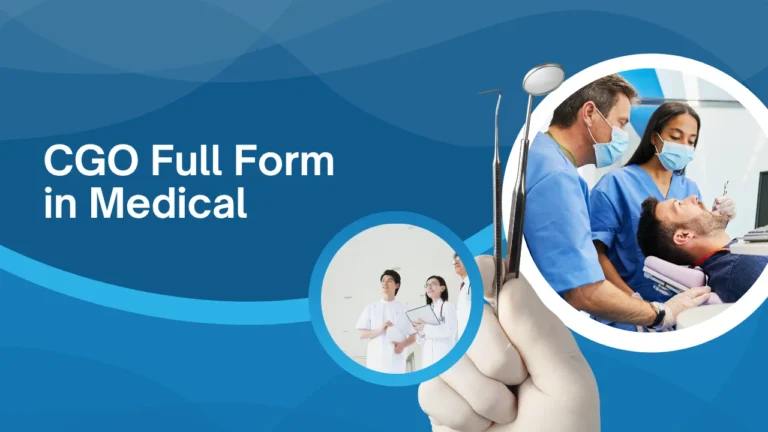PICU Full Form in Medical How It Helps Save Ill Children
When someone hears the term picu full form in medical, it often creates curiosity, especially for parents of sick children. Before explaining everything about PICU, it is worth noting that medical students also learn terms like BSMS Full Form, which refers to another important medical qualification. But here, our main focus is to understand what the PICU is, why it is vital, and how it functions inside a hospital.
The picu form in medical means Pediatric Intensive Care Unit, a special department in hospitals for critically ill children. It provides advanced monitoring, life support, and specialized care that general wards cannot offer.
What is PICU Full Form in Medical?
The PICU form in medical is Pediatric Intensive Care Unit. It is a specialized hospital department designed to care for critically ill infants, children, and teenagers who need close monitoring and advanced treatment. The PICU is equipped with modern machines like ventilators, infusion pumps, and monitors to support vital organs.
A highly trained team of pediatric intensivists, nurses, and therapists work together to provide 24-hour care. This unit is essential for managing life-threatening conditions such as severe infections, accidents, organ failure, or post-surgery recovery, ensuring that children receive the highest level of medical attention and support.
Why the PICU Is Important
The picu form in medical defines not just a unit but a lifeline for children facing life-threatening illnesses. Children’s bodies react differently from adults, so they need equipment and care plans customized to their size and physiology.
The PICU provides:
- Continuous monitoring of heart rate, oxygen, and blood pressure.
- Ventilators for children who cannot breathe on their own.
- Infusion pumps to deliver precise medication doses.
- Immediate medical attention during emergencies.
This level of care ensures that even the smallest change in the child’s health is detected early and managed quickly.
Who Needs PICU Care?
Not every sick child is admitted to the PICU. Doctors recommend it only when a child’s condition is unstable or critical. Common reasons for admission include:
- Severe pneumonia or breathing problems.
- After major surgery like heart or brain operations.
- Accidents or trauma causing internal injuries.
- Severe infections such as sepsis or meningitis.
- Organ failure, requiring machines for kidney or lung support.
These are life-threatening conditions that demand constant medical supervision, which only the PICU can provide.
The PICU Team and Their Roles
Every child in the PICU is cared for by a multidisciplinary team. Each member plays a vital role in recovery.
| Staff Member | Role and Responsibility |
|---|---|
| Pediatric Intensivist | Doctor specialized in treating critically ill children. |
| Critical Care Nurse | Monitors patient condition and administers medicine. |
| Respiratory Therapist | Manages ventilators and breathing machines. |
| Nutritionist / Pharmacist | Ensures proper diet and safe drug doses. |
| Physiotherapist | Helps child regain strength and mobility. |
| Social Worker / Counselor | Supports families emotionally and logistically. |
This team works in perfect coordination, ensuring the best care and emotional comfort for both the child and their parents.
Equipment and Technology Used in PICU
Modern technology plays a major role in the PICU. Here are some examples of essential tools found in this unit:
| Equipment | Function |
|---|---|
| Ventilator | Helps the child breathe if they can’t on their own. |
| Monitor Screen | Displays heart rate, oxygen levels, and blood pressure. |
| Infusion Pump | Controls the exact flow of medications. |
| Dialysis Machine | Cleans the blood when kidneys are not working. |
| Suction Machine | Clears airways and removes secretions. |
Every machine is continuously watched by the medical team to ensure safety and accurate operation.
The Atmosphere Inside a PICU
The PICU environment can feel intense at first. The room has monitors that beep, ventilators that make gentle sounds, and nurses moving around quietly. Parents may see tubes and wires connected to their child, but these are necessary to help doctors track and treat the illness.
Despite the machines, the PICU is designed to be calm, clean, and supportive, with family presence encouraged whenever possible.
Duration of Stay in PICU
The length of stay in a PICU depends on how sick the child is and how quickly recovery happens. Some children stay for only a few hours or a day. Others, especially those needing ventilators or surgery recovery, may stay for weeks.
The doctors decide discharge from the PICU based on improvement, stability of vital signs, and ability to continue recovery in a normal pediatric ward.
Levels of PICU
Hospitals may have different levels of PICU based on available facilities.
| Level | Description |
|---|---|
| Level I PICU | Fully equipped with advanced machines and specialists for complex cases. |
| Level II PICU | Handles serious but moderate cases and transfers extreme cases to Level I. |
| Specialized PICUs | Dedicated to certain conditions like cardiac, neuro, or trauma cases. |
These levels ensure that every child gets the right kind of care, based on the severity of their illness.
Common Diseases Treated in PICU

The picu form in medical becomes meaningful when we look at the variety of conditions treated there. Some of the common ones include:
- Respiratory failure needing artificial breathing.
- Heart defects or cardiac arrest.
- Severe infections affecting multiple organs.
- Traumatic brain injury or seizures.
- Post-surgery recovery for heart, lung, or brain operations.
- Poisoning or accidental drug overdose.
The PICU’s main goal is to support vital organs until the body heals.
How Monitoring Works
In the PICU, monitoring happens 24 hours a day. Machines constantly measure vital signs like:
- Heart rate and rhythm
- Blood oxygen and pressure
- Body temperature
- Breathing pattern
If any reading changes suddenly, an alarm alerts the medical team, and they act immediately. Continuous observation ensures that complications are caught early and managed before becoming serious.
Scoring Systems Used in PICU
Doctors use special scoring systems to assess the child’s condition. One such tool is the PRISM score (Pediatric Risk of Mortality). It evaluates several parameters to estimate the child’s risk and helps doctors plan treatment.
These scientific tools guide decision-making and improve the quality of care delivered to patients.
Its Role in Healthcare Systems
At this stage, it is also good to note another medical administrative term — DMO Full Form, which means District Medical Officer. Although it is not directly related to PICU, it highlights how medical systems work together to manage healthcare facilities and emergency response networks.
Challenges Faced in PICU
Running a PICU is not easy. The challenges are both medical and emotional. Staff deal with sudden emergencies, long hours, and high stress. Machines must work flawlessly, and infection control must be strict.
There is also the difficulty of limited space or resources in some hospitals. Despite these challenges, the dedication of healthcare professionals ensures the best outcomes for children.
Differences Between PICU and Other Units
It’s important to understand how PICU differs from other hospital departments.
| Unit | Patients | Care Type | Main Purpose |
|---|---|---|---|
| NICU | Newborn babies | Neonatal care | Manages premature or birth-related issues |
| PICU | Infants to teens | Pediatric critical care | Treats severe illness or post-surgery recovery |
| General Ward | Stable children | Routine care | For moderate illnesses not needing machines |
| Adult ICU | Adults | Critical care | For adult patients with life-threatening issues |
This table shows that picu full form in medical applies only to children and adolescents needing critical medical attention.
How the PICU Improves Recovery
The main advantage of the PICU is early intervention. Continuous observation and immediate response prevent many deaths. Specialized staff understand pediatric physiology, which makes treatments safer and faster.
Through collaboration, advanced technology, and experience, the PICU improves recovery rates and ensures children return home safely.
A Typical Day in a PICU
A regular day in the PICU starts with medical rounds. Doctors and nurses review each patient’s progress, adjust medicines, and check machines.
Throughout the day, tests like X-rays, blood work, or scans are done. Nurses note every detail, while therapists help with gentle exercises. At night, the room stays quiet but fully active, with constant observation and readiness for any emergency.
Training and Expertise
Working in a PICU requires extensive training. Doctors must complete pediatric residencies and specialize in pediatric critical care. Nurses undergo skill development in ventilator management, emergency response, and child psychology.
This continuous training ensures the PICU functions smoothly even in high-pressure situations.
What’s Coming Next in Pediatric Intensive Care
The future of the PICU looks promising with new technologies such as AI-based monitoring, tele-ICU systems, and portable ventilators. These advancements will help doctors predict problems early and expand critical care access to smaller hospitals.
Better designs and improved patient-family communication will make PICU stays less stressful for everyone.
Conclusion
In conclusion, the picu full form in medical stands for Pediatric Intensive Care Unit — the hospital department where the most fragile and severely ill children receive lifesaving care.
Understanding the picu form in medical helps parents, students, and healthcare workers appreciate the value of this unit in modern hospitals. It represents hope, resilience, and the promise of a healthier tomorrow for every child.






